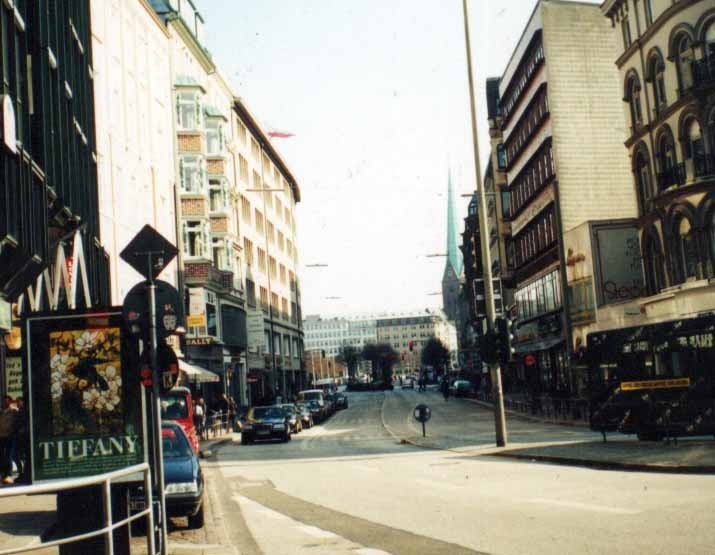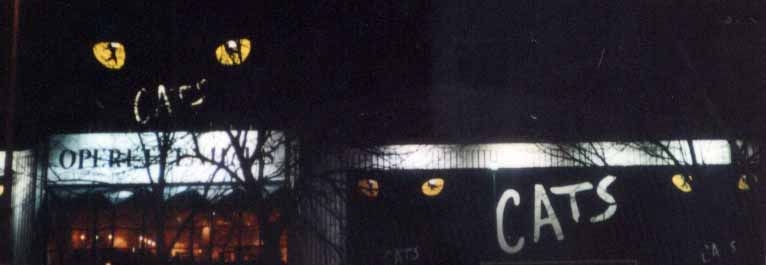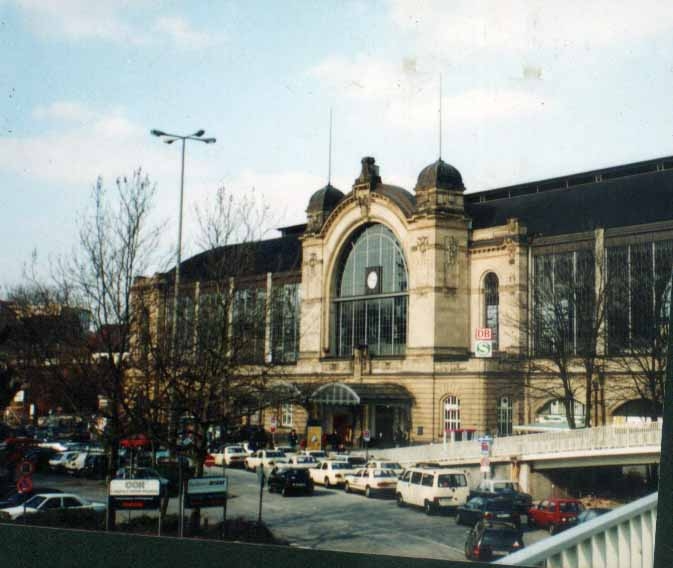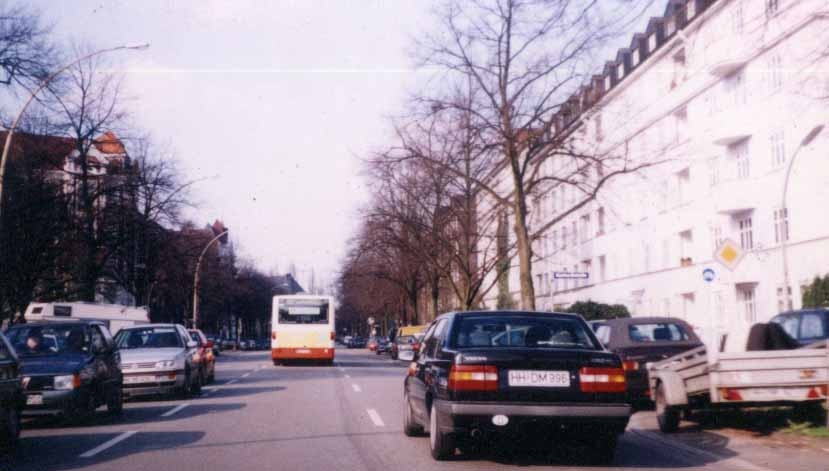The Lufthansa plane stopped over at Frankfurt International Airport, less than an hour from the city of Hamburg.
To while away my time, I listened to a song whose words I did not understand yet soothed my innermost thoughts. Added to my ease was the colorful, magnetizing view of the place. I was delighted to see many Filipinos at the airport — some of them have been contentedly working there while others have just been passing through, off to other places in Europe.
Minutes passed, and all passengers were instructed to come inside the plane right away for the carrier was about to depart for Hamburg. At this point, I saw a few Filipino passengers. Then, a chubby man, in his 40s, sat beside me. He gave a wide, sweet smile, and we began to talk in English. Through the length of our friendly conversation and exchange of ideas, I discovered the beauty of his character, perhaps as great as the Elephant Man.
It was about 8 a.m. when the carrier landed at Hamburg. A new English-speaking German acquaintance bade me goodbye and wished me good luck. At the immigration counter, no pressing questions were asked. I was quickly able to get my two small bags and set foot on Hamburg soil.
Hamburg is a city riddled with several canals that are quite clean, more than Venice can boast. It is Germany’s second largest city, which serves as the gateway to the world. It is a prosperous city, the trading and media capital of Germany with press, radio, television, and advertising agencies already established and a fast-growing film industry.
I wasted no time in seeing as much of the city as I could. Thanks to the invitation then of a prominent German scientist, Dr. Roland Fischer, a professor at the University of Hamburg.
At Rothenbaumchaussee, I checked in at Elysee Hamburg Hotel. The room assigned to me was equipped with opening triple-glazed windows, fully adjustable air-conditioning, bath, bidet, radio, color TV, fax and interface connection, direct-dial phone in main room and bathroom, mini-bar, and safe deposit box.
Though I had jet lag, I decided against taking a quick nap for fear that I might lose an entire day of my Hamburg experience.
After lunch at a classic Italian restaurant in Mediterranean surroundings, I visited the University of Hamburg. I was filled with joy for the university is so lovely that I felt I had arrived in James Hilton’s Lost Horizon.
In the evening, I went to Hotel Engel to attend a cocktail party, courtesy of an Italian diplomat.
The next day was too tiring yet enjoyable at the University of Hamburg’s Physiological Institute: as early as 9 a.m., I listened to discussion on metabolism, toxity, and chelation of iron, chaired by professors from Czech Republic and Belgium. This was followed by lectures of professors from Israel and France. The discussions were really stimulating and enlightening.
I had lunch at the University of Hamburg’s MENSA and leisurely enjoyed a stroll around the campus’ pristine grounds before going back to the university’s Physiological Institute for the session chaired by professors from the UK, US, and Germany.
Later, after the day’s activity, I was surprised to find out that scientists knew how to appreciate arts and history. After a sumptuous dinner at Mondial, we toured the Hamburg Museum of Ethnology at Rothenbaumchaussee. That fantastic museum, a walking distance from Elysee Hamburg Hotel, showcased exhibits from Africa, America, Asia, Australia, Europe, and the South Seas (the museum is open until 9:00 p.m.).

I also learned that there is a museum about Afghanistan right in the heart of The Free and Hanseatic City of Hamburg. It’s called the Afghan Art and Culture Museum situated on Am Sandtorkai road.
Other interesting museums are the Museum of Hamburg History on Holtstenwall Street, showcasing medieval and modern-day Hamburg; Altona Museum/Norddeutsches Landesmuseum along Museumstrasse, showcasing North Germany’s art and cultural history, the importance of fishing and shipping; Krameramtswohnungen along Krayenkamp road near St. Michaelis street that shows historic almhouses for merchant’s widows.
Also: Warehouse Complex Museum on St. Annenufer Street about the history of warehouse complex and work carried out in the warehouse; Museum of Work along Maurienstrasse showcasing the history of Hamburg’s industrial development firsthand be it in printing, merchant trading, the port, fish processing or hard rubber combs; Jenisch House and Park on Baron-Voght-Strasse road, featuring examples of upper
middle-class furnishings and decorating from the 16th to 19th centuries.
Plus: Deichtorhallen on Deichtorstrasse about the varied program of Northern Europe’s largest art museums presented a broad spectrum of international contemporary art; and the most interesting of all, the Erotic Art Museum, on Davidstrasse, showcasing erotic art from the Renaissance to modern day.
Founded in 811 A.D. as “Hamburg,” this began to thrive as a commercial town in 1189. The people of Hamburg, or the Hamburgers, are amiable people accustomed to being surrounded by foreigners. There is an abundance of taxis in Hamburg, and I found out there are a lot of female taxi drivers and they earn a large amount of Deutsche Mark (Germany’s monetary unit until 2002). It’s a good idea to ask for a rough estimate before you get inside a taxicab. Some taxi drivers will only take you by the scenic route (if you request them to do so), but it is quite costly. You can hire a car, provided you have a credit card, are over 21 years old and have had a valid license for at least two years. You can also ride public transport that is cheaper, less of a headache and usually faster.

Sunday, my last day in Hamburg. I woke up late in the morning. Unluckily, I was not able to see the Fish Market where just about everything is traded on Hamburg’s oldest market, licensed since 1703.
The Fish Market and its distinctive weekend morning pubs are popular with both early risers and late-night outers, who call it a day with the Port of Hamburg as their backdrop. It is open from 5 a.m. to 10 a.m. only, so timely planning is recommended. You can even find there a handful of art galleries.
At noon, I had my lunch at a large French buffet, Parisian style and savoir vivre. I found out that I can drink Hamburg’s lead-free tap water, coming from springs deep below the ground and subjected to stringent purity standards. I also noted that the electricity is 220 volts and about 50 hertz.
Maintaining contact with one’s homeland is not a problem in Hamburg: it is advisable to phone home between 6 p.m. and 8 a.m. to avail of the cheap rate.

I passed by the nearest inter-city train station, the Dammtor Railway Station. Then, I walked further away until I reached the breezy Jungfernstieg road where the Alster-Cabrio on the outer Alster lake is located.
Interestingly, Hamburg is the only place where one can tour the city by ship on the Inner and Outer Alster. One can certainly experience all the charm of the Alster with the attractive Alster Park, the Villas, and sailing boats set against the panoramic background of towers and church spires.
I quickly returned to the hotel to try Walter’s Schanke, a cozy and first-class meeting place for all those who appreciate fresh draft beer and solid dainties.
From the hotel to the airport, a taxi driver charged me over 30 DM. While at the airport, someone from Houston, Texas, USA, a Filipino-American scientist working for the American NASA, befriended me. He really missed his homeland.
As the plane was about to depart for Frankfurt at 6:50 p.m., we bade goodbye to Hamburg, truly a prosperous city enhanced by the sophistication and speed of the port services and facilities offered by the Free Port area and the roughly 6,000 companies active in the media industry employing a workforce of 50,000 and utilizing the service of numerous freelance writers.
